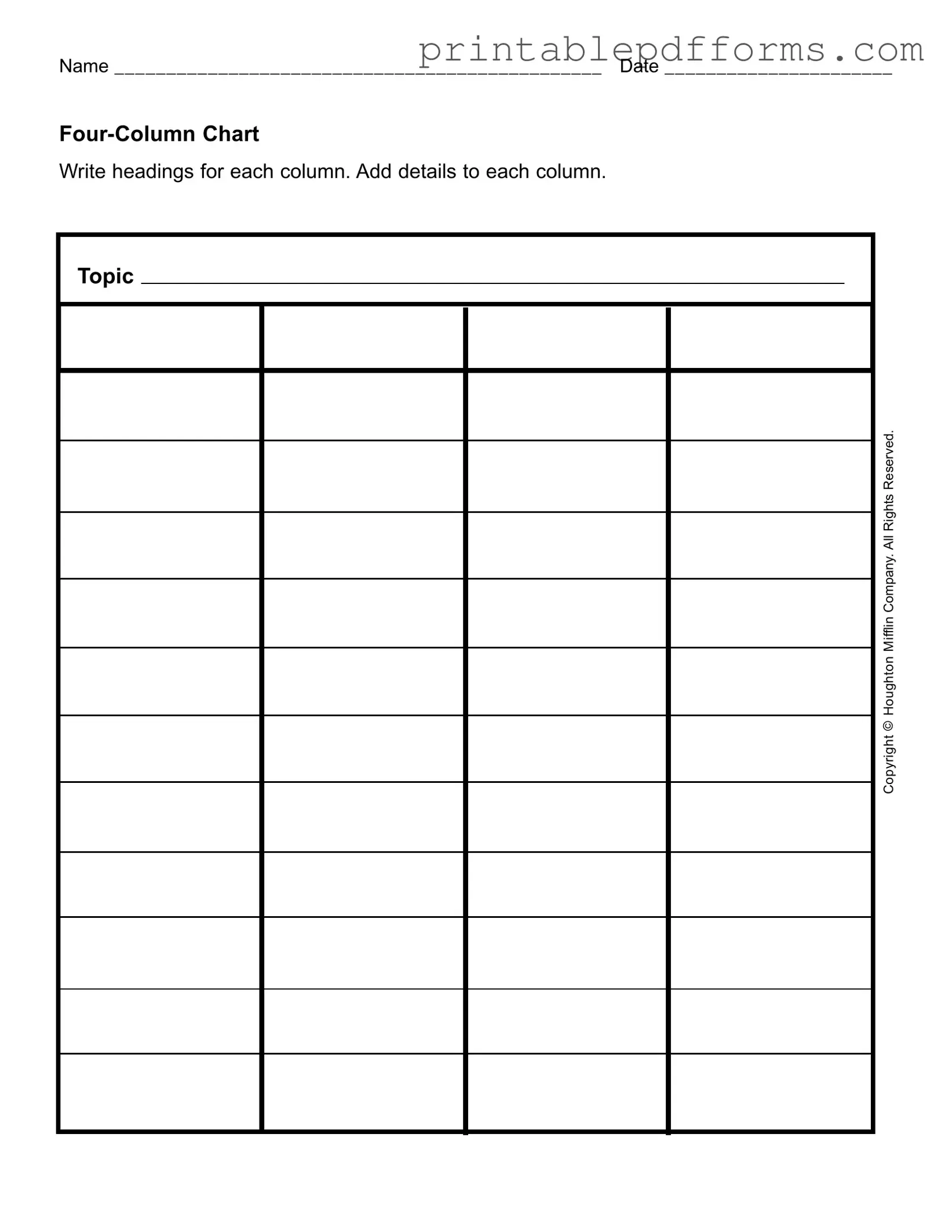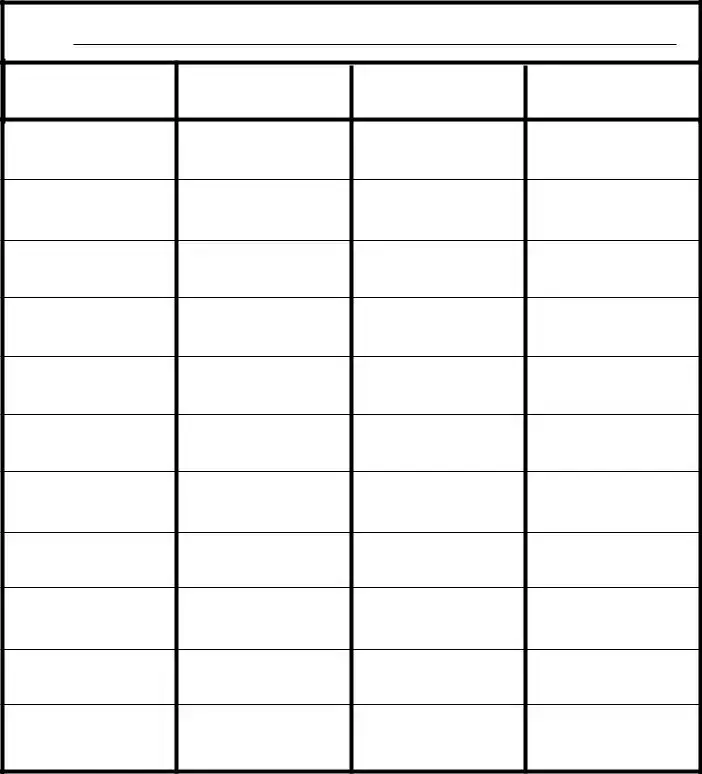What is a Four Column Chart?
A Four Column Chart is a structured tool used for organizing information. It typically consists of four columns where you can categorize and detail various aspects of a specific topic. This format helps in visualizing relationships, comparing data, or brainstorming ideas in a clear and concise manner.
How do I fill out a Four Column Chart?
To complete a Four Column Chart, start by writing a clear heading for each column. The headings should reflect the categories of information you wish to include. After establishing the headings, proceed to fill in the details relevant to each category. This process can be done individually or collaboratively, depending on your needs.
What types of topics are suitable for a Four Column Chart?
A Four Column Chart can be used for a variety of topics, including:
-
Comparing products or services
-
Analyzing pros and cons
-
Brainstorming project ideas
-
Organizing research data
Essentially, any subject that benefits from categorization and comparison can be effectively represented in this format.
Can I use a Four Column Chart for group projects?
Absolutely! A Four Column Chart is an excellent tool for group projects. It encourages collaboration and allows team members to contribute their insights in an organized manner. By working together to fill out the chart, teams can facilitate discussions and ensure that all perspectives are considered.
While there is no strict format, a standard Four Column Chart typically includes four distinct columns with clear headings. The layout can be adapted based on your needs. You can use digital tools or simply draw it out on paper. The key is to maintain clarity and organization in how the information is presented.
What are the benefits of using a Four Column Chart?
Using a Four Column Chart offers several advantages:
-
Improved organization of information
-
Enhanced clarity in comparisons
-
Facilitated brainstorming sessions
-
Increased engagement in group discussions
These benefits make it a valuable resource for students, professionals, and anyone looking to streamline their thought process.
Can I customize the Four Column Chart for my specific needs?
Yes, customization is encouraged! You can modify the headings, adjust the number of columns, or change the layout to better suit your specific requirements. The flexibility of the Four Column Chart allows it to be tailored to various contexts and preferences.
Where can I find templates for a Four Column Chart?
Templates for a Four Column Chart can be found online through educational resources, document creation software, or even in word processing applications. Many platforms offer customizable templates that can be easily adapted to fit your needs. Additionally, you can create your own template from scratch using simple drawing tools.

